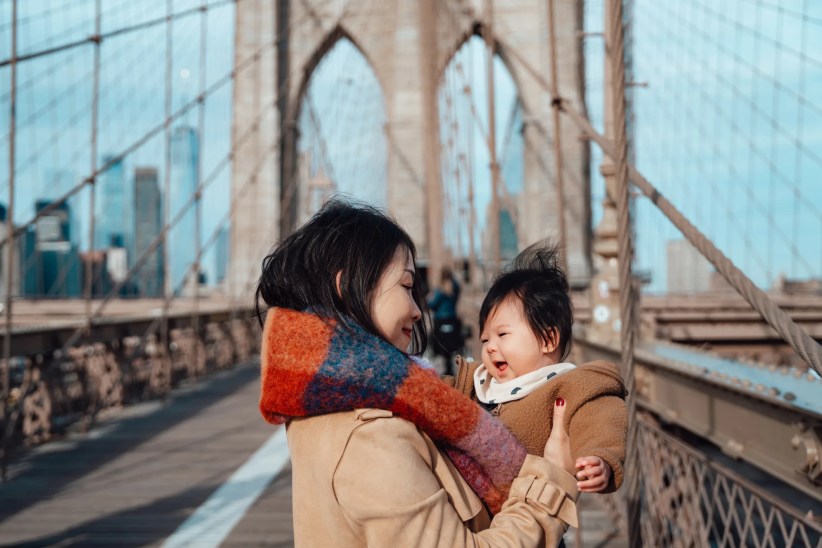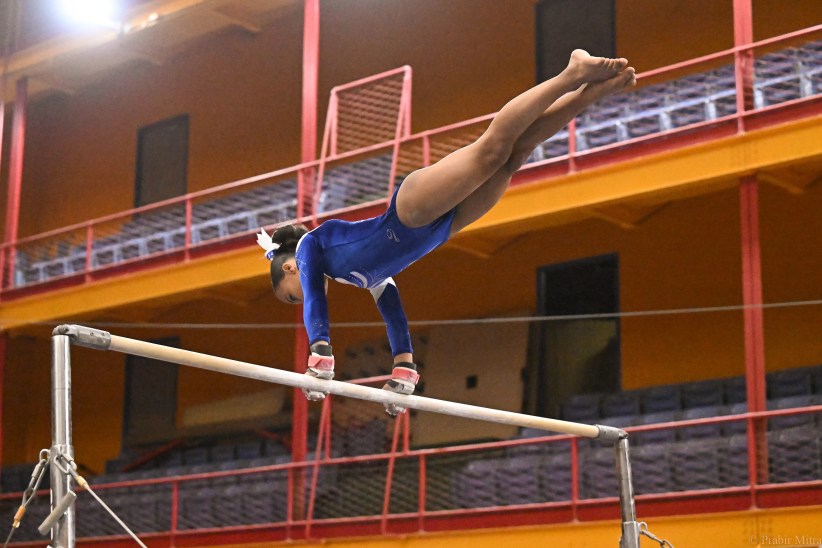Editor’s Note: For 12 more ways to give, inspired by some of our feature subjects from the past year, click here.
EDITORS’ PICK: WaterAid America

Most of us don’t think twice about using a water fountain, or washing our dishes in the sink, or living in a home with multiple bathrooms. We expect that our water is sanitary and safe to consume. However, roughly one in ten people around the world lack access to safe water, and a lack of access to clean water and toilets is the second biggest killer of children under 5 worldwide. WaterAid America is the world’s largest non-profit dedicated solely to helping people in 26 of the world’s poorest countries gain lasting access to safe drinking water, toilets, and hygiene awareness. Sarina Prabasi, WaterAid’s CEO, has 20 years of experience in international development. From her perspective, working for WaterAid America “encompasses and aids all of the major issues” that she cares most about.
A mother herself, Prabasi’s heart aches for those who have lost their children to contaminated water and the issues that accompany it. “Once I had children, I [thought] about this every day. It is so difficult for moms all around the world to feel powerless to help their children survive because the resources simply are not there,” Prabasi says.
Though everyone in the world needs clean and safe water in order to survive, in many of the world’s poorest countries where clean water is not readily available, bringing in the technology to sanitize it is the first step to helping people out of poverty.
“In southern Ethiopia, the environment is so dry that women and children had to scratch at a dry riverbed until little bits of water would come up that they could collect,” Prabasi says. “We brought in the technology needed to surface and clean the water, which changed the lives of so many families… We also eliminated the dangerous trips to the riverbed during which many women and children were assaulted or raped. So many times people have said to us: ‘Now I don’t have to feel afraid. I don’t have to hide. I don’t have to risk harassment.’”
Currently, WaterAid America is in the midst of its end-of-year fundraising campaign, Child of Mine, which focuses on decreasing childhood mortality rates.
“Right now, half a million children per year do not survive past the age of 5 due to a lack of sanitary water and poor hygiene,” Prabasi explains. Through the Child of Mine campaign, WaterAid America hopes to provide safe water to 100,000 children under 5. For more information, visit wateraid.org
–Felicia Czochanski
EDITORS’ PICK: Girls Write Now
Seventeen years ago, Maya Nussbaum, the founder and executive director of Girls Write Now, was a recent college graduate with aspirations to make a change. She envisioned herself helping young girls by giving them the opportunity to share their voices and change their lives’ trajectories through writing. As a writer herself, Nussbaum knew how scary and challenging it is to be a young female writer. With Nussbaum’s desire to create a change for young women, and with the mission “to serve, to create and to make writing communal enterprise for young women,” Girls Write Now was born.

Girls Write Now is New York’s first and only organization that offers writing services and mentoring programs for high school girls from various undeserved New York neighborhoods. Of the program’s mentees, 90 percent are high need, 90 percent are girls of color, and 20 percent are immigrants. In New York, only 22 percent of students graduating from high school have proficient writing skills. Girls Write Now is trying to change that grim statistic. Since its founding in 1998, Girls Write Now has transformed the lives of 5,000 girls, all of whom have gone on to college with portfolios, scholarships, and perhaps most importantly—confidence.
Each Girls Write Now mentee is paired with a mentor to guide and teach her in writing for 1-4 years until she’s ready for college or a career. Mentors commit over 10,000 hours of service annually.
“Our focus is that their writing is their point of entry, with the support from mentors who are all professional writers—poets, journalists, authors and more,” Nussbaum says. Mentors are writers who are really focused on their craft, and have volunteered to share their passion to help guide young girls who may one day become influential writers. “At Girls Write Now, we provide love and support and make sure that the girls are getting everything they need to get into college and to the real world,” she adds.
Apart from its foundational mentoring program, Girls Write Now offers a variety of other programs and events for mentees to further their writing skills. The CHAPTERS reading series is one of the organization’s major events, where the whole Girls Write Now community comes together to celebrate mentees’ writing. The organization also publishes Breaking Through, an annual anthology of the best stories from mentor-mentee pairs.
“The Girls are inspiring with everything they do…they will become lifelong ambassadors for hope and change,” Nussbaum says. For more information, visit girlswritenow.org
–Sohee Kim
EDITORS’ PICK: US-Africa Children’s Fellowship
For former Brooklyn high school teacher Mark Grashow and his wife, Sheri Saltzberg, a 2003 trip to Zimbabwe became an opportunity to make a difference in African schools. Grashow had recently retired from teaching math at Brooklyn’s Abraham Lincoln High School, and the couple’s son had worked in Zimbabwe with an organization called Organization of Rural Associations for Progress (ORAP). After attending a wedding in Zambia, Grashow and Saltzberg went to Zimbabwe to visit ORAP and also saw some local schools.

“They had nothing: No books, no libraries, no textbooks, no school supplies, no sports equipment, nothing,” Grashow recalls. He remembered how back at Abraham Lincoln High School, enormous amounts of school materials were frequently discarded. “That always bothered me, the waste,” he says. At the time, ORAP was providing support to 35 schools. Upon this realization, Grashow offered to find 35 schools in the US to partner with these schools in Africa. “Within a year we found 35 schools and bought a 40-ft container—the first one was at Abraham Lincoln High School—and I started collecting,” Grashow says.
That year, the couple co-founded the US-Africa Children’s Fellowship (USACF), an organization dedicated to donating school supplies and technology from US schools to schools in Africa. USACF aims to improve the quality of education for students and teachers in poor areas throughout Africa, while also educating and empowering students at US partner schools. Since April 2013, USACF has shipped 28 40-ft containers—containing supplies such as soccer balls, books, desks, bikes, blackboards, and more—to schools in Ghana, Zimbabwe, Tanzania, South Africa, and Botswana.
Now, USACF works with 172 partner schools, providing supplies to approximately 50,000 students. In 2007, former President Bill Clinton featured Grashow and Saltzberg in his book Giving, and soon other countries in need of donations began to reach out to the couple.
In addition to sending supplies, USACF has also contracted with a Zimbabwean lumber company in order to help repair school furniture, and partnered with local NYC soccer development program Super Soccer Stars, which has donated equipment and sent coaches to teach soccer and instruct teachers in coaching and running afterschool sports and activities.
For USACF, ultimately the challenge isn’t getting people to donate, but securing the necessary funding to ship the boxes. However, through Grashow and Saltzberg’s hard work, USACF has become sustainable and successful.
“[It’s] being able to see the impact of what you’re doing,” Grashow says. “To have 80 percent of a school passing their exams, watching kids in a soccer tournament, watching kids in a classroom that has desks and blackboard and a library. The impact is enormous.” For more information, visit thechildrensfellowship.org
-Nora Fried
EDITORS’ PICK: The Lulu & Leo Fund
In the fall of 2012, Upper West Side parents Marina and Kevin Krim were faced with an unthinkable tragedy. Their daughter Lucia (Lulu), 6, and son, Leo, 2, were found dead in their home, allegedly killed by the family’s nanny. In the memory of Lulu and Leo, the Krims founded the Lulu & Leo Fund “to share the inspiration of and hope of Lulu and Leo’s lives to a global community,” says Jennifer Goldschein, the Fund’s executive director.
The Lulu & Leo Fund, which started as a Facebook page, has evolved into an organization dedicated to promoting the healing power of creativity among children and families.
“[The Lulu & Leo Fund] is driven by the conviction that creative confidence—the belief that one can effect positive change—has the power to heal, to grow, to change lives,” Goldschein says. The Fund has been running and supporting both its own and other city arts programming for just over a year. In 2014, it served more than 2,300 children through its programs.
The Lulu & Leo Fund’s primary initiative is its SuperArtist program, which provides children with the tools to grow their creative confidence, in order to build stronger children, families, and communities. Twice per month, SuperArtist sends participants an email challenge, which consist of thoughtful projects or activities that families and children can complete together. Participating families are encouraged to post their work in SuperArtist’s online gallery, where other families can also provide inspiration and ideas.

“We want to give parents the tools to nurture a child’s natural creativity and use it to help themselves grow as individuals, parents, and families,” Goldschein says. Ultimately, the Lulu & Leo Fund’s goal is to develop a SuperArtist curriculum that schools and other programs dedicated to building children’s creative confidence can implement.
In addition to the SuperArtist program, the LuLu & Leo Fund is also dedicated to providing long-term funding to local arts and cultural organizations, such as the Museum of the City of New York and Free Arts NYC.
Through the Lulu & Leo Fund, the Krim family has been able to celebrate the critical role that the arts played in the short lives of Lulu and Leo.
“Seeing children respond so enthusiastically and creatively to our programs is a very tangible way of seeing the positive impact the Fund is having,” Goldschein says. “That’s a great counterpoint to the darkness of [the Krims’] loss.” For more information on the Lulu & Leo Fund, visit lululeofund.org
–Lauren Vespoli




















